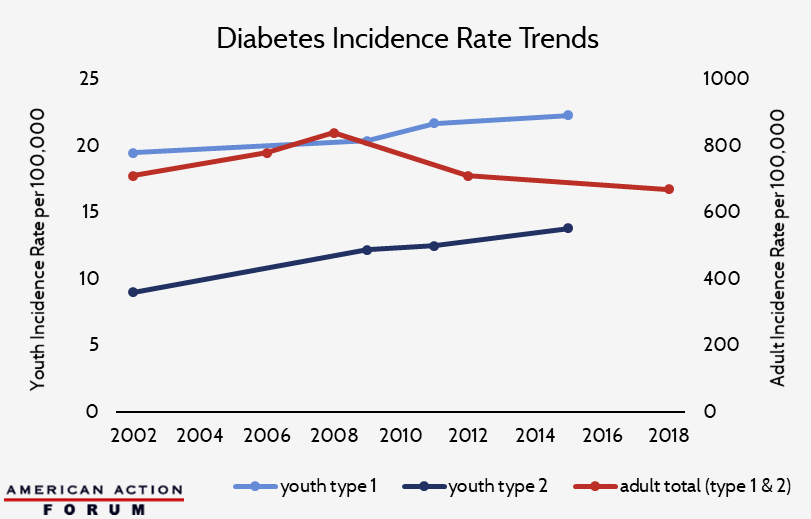Weekly Checkup
February 21, 2020
The Real Cost of BernieCare
This week the Democratic presidential aspirants gathered in Nevada for yet another debate. Most of the coverage has focused on the debate’s human piñata, Michael Bloomberg, but carrying over from past debates was criticism of Senator Bernie Sanders’ plan for single-payer, government-run health care and his failure to explain how he will pay for it. While cost estimates vary, of note is that most publicly available estimates of the 10-year cost of Sanders’ plan do not include the cost of providing universal access to long-term care services—something the most recent version of the Sanders’ plan undertakes to provide. AAF’s new research this week on the costs of long-term care sheds light on what these costs might be.
Long-term care typically refers to assistance with six basic activities of daily living: eating, bathing, getting dressed, toileting, transferring (moving from one place to another), and continence. According to new estimates by AAF’s Tara O’Neill Hayes and Sara Kurtovic, the total true cost of long-term care services in 2018 was between $758 billion and $1.4 trillion. Further, by 2030, they project the true cost of long-term care could total between $1.3 trillion and $2.5 trillion. Those estimates include both paid long-term care and the uncompensated long-term care provided by friends and family. Including both sides is important for several reasons related to expected increases in the number of people requiring these services over the next decade and the increasing age of uncompensated caregivers. But it’s also important because Senator Sanders is proposing to provide universal access to long-term care services. In other words, Sanders’ plan would bring all these costs, whether they are currently paid or not, onto the federal ledger.
AAF’s Center for Health and Economy has previously estimated the total price tag for the Sanders’ health plan at $34.67 trillion over 10 years. That’s roughly in the same ballpark as most other estimates. For comparison, the Urban Institute found a 10-year cost of $32 trillion, while the Mercatus Center has put the figure at $32.6 trillion. But again, none of these estimates includes the cost of covering long-term care.
If, however, one were to take Hayes and Kurtovic’s numbers and apply an expected annual increase in the cost of paid care of 2.9 percent and of 5.3 percent for unpaid care, the total estimated cost of covering all long-term care services would be $13.7 trillion between 2021-2030. In other words, the 10-year cost of Sanders’ single-payer plan is closer to $46 trillion rather than $32 trillion.
As AAF President Douglas Holtz-Eakin wrote, “There is no ‘plan’ to cover these costs; indeed, private LTC insurance is rare, and most families have not saved enough to pay for their LTC. Instead, there is a heavy reliance on unpaid, family caregivers to provide LTC.” Senator Sanders, however, has promised to address this need, and for that he should be commended. Unfortunately, he can’t tell us how he’ll pay for it.
Chart Review: Rising Demand for Insulin Among the Youth
Josee Farmer, Health Care Policy Intern
Since 2008, diabetes incidence rates among adults – individuals 18 and older – have steadily decreased. In contrast, incidence rates among the youth – those 20 years and younger – of both type 1 and type 2 diabetes have steadily increased from 2002-2015, according to a recently released Centers for Disease Control and Prevention (CDC) study in the Morbidity and Mortality Weekly Report. This study uses data from the SEARCH for Diabetes in Youth, which represents roughly 69 million individuals. The study found a 1.9 percent annual increase in youth type 1 incidence rates and a 4.8 percent annual increase in youth type 2 incidence rates. These increases in diabetes incidence equate to an increasing future demand for insulin – and with more years left to live, the youth will demand insulin for a longer span of time than new adult diabetics. While incidence rates remain much lower among the youth than among adults, the rising demand from this demographic ensures that concerns over the cost of insulin will not fade, as the need is not going away.
All data obtained from the CDC
Note: incidence rate identifies new cases in one year
From Team Health
The Ballooning Costs of Long-Term Care – Director of Human Welfare Policy Tara O’Neill Hayes and Sara Kurtovic
While the demand for long-term care is rising dramatically, plans to meet this demand and pay for this care are woefully insufficient.
Daily Dish: Long-Term Care Costs – AAF President Douglas Holtz-Eakin
Formulating an effective policy to address financing the ballooning costs of long-term care is really important. And really hard.
Worth a Look
The Hill: House Democrats ask Trump to ensure affordability of future coronavirus vaccine
Reuters: Could warmer weather help contain the coronavirus?











